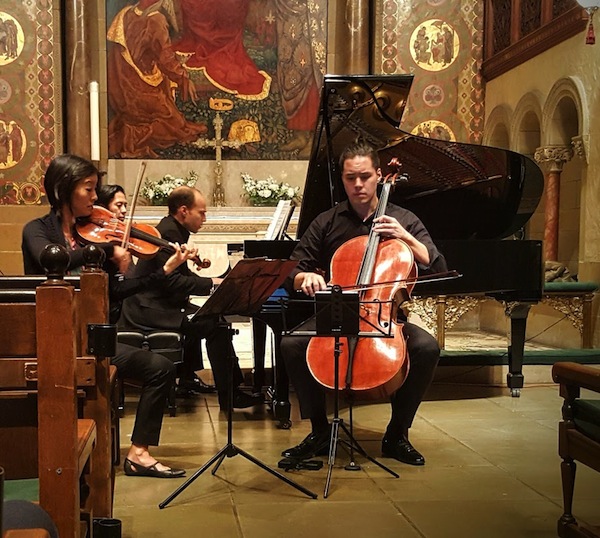Direct from Havana, Third Sound delivers a smart, attractive mix of new music
Opening on the road and then bringing the show to New York after working out the kinks—that works for Broadway, and it apparently can work for music ensembles too.
Third Sound, a new new-music ensemble that played their first New York concert Tuesday night at St. Bartholomew’s Church, debuted last year in Havana, Cuba.
Third Sound opened there in November, for the Havana Contemporary Music Festival, where they played contemporary American music in partnership with the American Composers Forum. What they brought back to New York was a program that mixed music from American and Cuban composers, with all but one of the pieces coming from this century, highlights from their Havana residency.
The five-member ensemble—flutist Sooyun Kim, clarinetist Romie de Guise-Langlois, violinist Karen Kim, cellist Michael Nicolas, and pianist Orion Weiss—presented an unexpected sound. The technical and rhythmic demands of so much contemporary music generally influences new music groups to emphasize a keen precision and exactitude.
Third Sound would sound great playing Brahms. There is a big, colorful quality to the way they play, especially from the woodwind players, who have large-bore, focused timbres.
The bulk of the music gave them opportunities to give full voice to their individual and ensembles voices, and the results were often gorgeous. The tradeoff for all the sonic beauty was that some of the pieces had a wan form and a diluted effect.
This program of highlights contained two fragments; individual movements of larger pieces, each played to open a half. The first movement of Cindy Cox’s Wave for piano trio was marked “quietly urgent,” and that was a beguiling way to begin. The music developed from a simple, minor key phrase, fermenting structural and harmonic complexity, and leading the ear to want to more.
Third Sound built an arch for the first half of the concert, one that grew gradually. In Kai-Young Chan’s Mieko, for solo flute accompanied by prerecorded audio, Sooyun Kim’s deep flute sound was satisfying enough, and the electronics effectively created a altered context for her solo playing, one that enhanced the chapel’s setting.
There was a bracing juxtaposition from two of the finest compositions on the program: Inexpressible for flute, violin, and cello, by Amadeus Regucera; and Guido López-Gavilán’s Mensaje de Cálidas Tierras, written for alto flute, bass clarinet, and piano (and dated 1992).
The former was a fast, agile series of energetic thrusts and feints. The piece was full of discord and extended techniques, shaped with vivid, exciting tension, and it was good to hear Third Sound play with punch.
López-Gavilán’s composition is admirably well-made, a lyrical chamber work with an excellent balance of space and line, and a form that can’t be seen but is felt. This is a superb example of a composer’s craft, and the performance was entrancing. It was a nice bonus that López-Gavilán himself was able to travel from Cuba to attend.
That musical richness was unfortunately dissipated by Ingrid Arauco’s Fantasy-Quartet for the Messiaenic ensemble of violin, clarinet, cello, and piano. The music was passionate, but the fantasy drifted past the point of focus. After intermission, the second movement of Wilma Alba Cal’s Homenaje a Piazzolla restored a sense of order and direction. Thankfully not a tango after Piazzolla, it was personal reflection through a ballad, sounding like a Leonard Bernstein song.
Christopher Wendell Jones’ a crowd of twisted things shared a similar attitude with Inexpressible; a little aggressive, a little swaggering, meant to express, not impress. For violin and piano, it’s full of intriguing details, like bits of quarter-tone playing in the violin and clipped, block chords in the piano. Karen Kim and Orion Weiss’ playing was muscular and gripping. The rough stuff was the good stuff.
Jeremy Gill’s Paean, Epitaph, and Dithyramb for flute, cello, and piano, was as impassioned as the Fantasy-Quartet, and similarly lost it’s way a bit. Third Sound played this, like all the lyrical, tonal music on the program, with an energetic commitment to beauty, but the passion tended to overwhelm the structure of the piece.
Jennifer Higdon’s Smash, a toccata played by the whole ensemble, finished the concert with her trademark technical skill and icy expression.
It was an impressive night for Third Sound, ending with the bonus of an encore,Acrílicos en el espacio by Eduardo Martín, an elegant example of son cubano composing.
